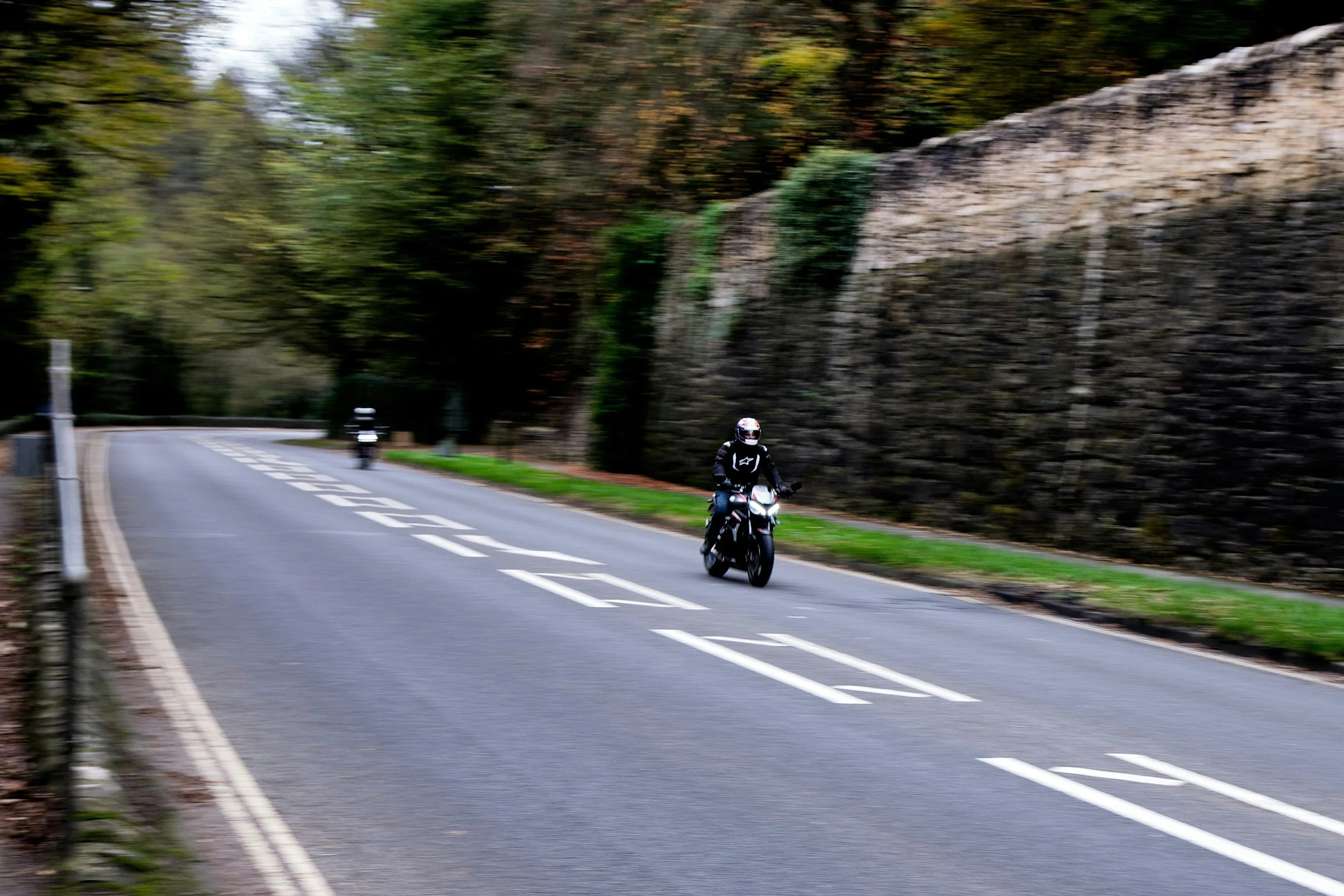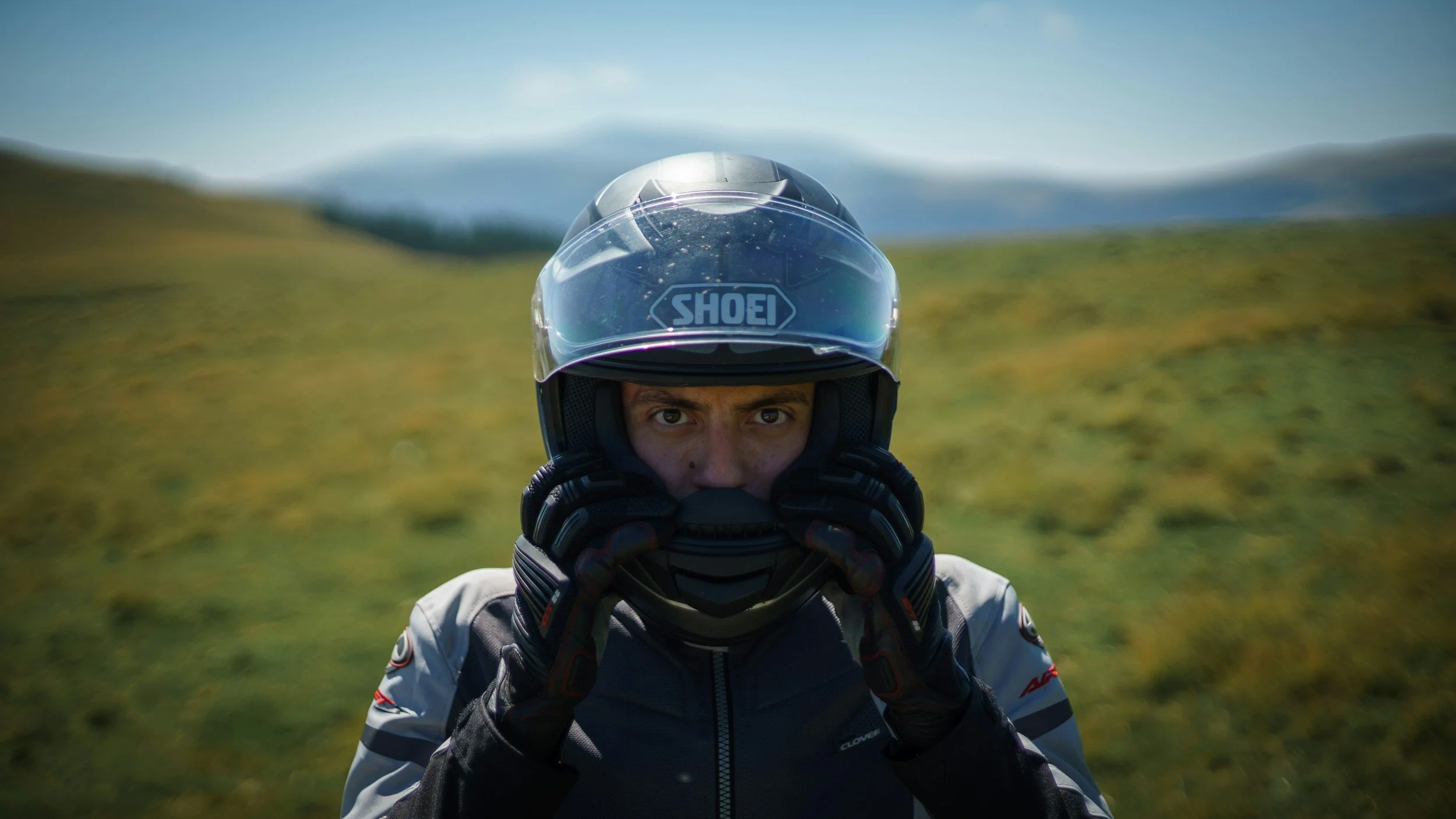

Frequently Asked Questions
ANSWERS TO YOUR
FAQs
What time do I have to be there?
Try and turn up around 10 minutes before course start time, this allows you to settle in before the course starts. As a courtesy to other trainees, you may forfeit your place on the course if you arrive more than 15 minutes late.
Plan your arrival beforehand - check out our two training locations.
What happens when the weather is bad?
Unless the conditions are dangerous you will get to experience another aspect of real life riding – adverse weather conditions! Just ensure that you arrive correctly dressed for the occasion with warm and waterproof clothing if it looks like it will be cold or wet. Note: We will not re-arrange or refund a course where the trainee has come ill prepared. In addition, we may refuse to conduct the course for the same reason.
When and how do I pay?
Payment is required when making your booking online via either Stripe (Credit Card) or request Riderquals’ Bank account details when selecting ‘payment type’ when booking. Will then then manually approve your booking once payment has been received, once paid you will receive your booking approval via email with further course instructions.
What if I need to cancel my course
Time and resources are a valuable commodity. Please allow 48 hours for cancellations.
Riderqual has a 10% refund charge to cover online payment reversal costs.
Contact Us if you need to cancel your training.
What do I need for my Basic Handling Skills Test?
You must be at least 16 years old and provide identification and proof of age.
You must wear suitable clothing to minimise risk of injury and protect you from adverse weather conditions. In particular, footwear should be fully enclosed. We recommend that you cover your arms and legs. All riders are welcome to use one of the Riderqual motorcycles at no extra charge, or alternatively bring your own motorcycle. Helmets are provided.
What if I fail to reach the required standard for the Basic Handling Skills Test?
If you are not successful in reaching the required standard of competency, we will offer you further training at a later time or date chargeable at our standard hourly rate. The cost of a re-test is free if you opt for further training with us.
Talk to us about further training.
What is the Learner Approved Motorcycle Scheme (LAMS)?
The Learner Approved Motorcycle Scheme (LAMS) identifies motorcycles that are considered suitable for riders on a Class 6 (motorcycle) learner or restricted licence. The scheme moves away from applying restrictions based on engine capacity alone to applying restrictions based on the overall performance capability of the motorcycle.
See more at NZTA.
Why is LAMS being introduced?
Motorcyclists are over-represented in crashes, and have a high risk of being involved in fatal and serious injury crashes. As larger and more powerful bikes are more likely to be involved in crashes than lower powered motorcycles, a power-to-weight restriction will be applied to determine the motorbikes that riders on a Class 6 learner or restricted motorcycle licence are able to ride to help reduce this risk.
The introduction of the scheme is one of many initiatives from Safer Journeys, New Zealand’s Road Safety Strategy 2010-2020, and has been legislated in the Land Transport (Driver Licensing) Amendment Rule 2011.
What restrictions are proposed on the types of motorcycles that Class 6 learner or restricted licenced riders can ride, and why?
Holders of learner and restricted motorcycle licences used to be restricted to riding motorcycles of 250cc and less. However, advances in technology are limiting the effectiveness of the restriction.
A number of powerful high-performance 250cc motorcycles capable of high speeds and rapid acceleration are available on the market. These motorcycles are not suitable for riders on a Class 6 learner or restricted licence due to their power, riding position and handling.
Advances in motorcycle technology are likely to continue.
What motorcycles can a rider on a learner or restricted licence ride?
The scheme allows learner and restricted licence holders to ride motorcycles:
with a maximum power-to-weight ratio of 150 kilowatts per tonne AND
an upper engine capacity of 660cc AND
that are published on the approved list on the NZTA website.
The scheme also allows learner and restricted licence holders to ride any electric motorcycles, unless that electric motorcycle is on the NZTA LAMS-prohibited list.
What motorcycles can a rider on a learner or restricted licence not ride?
Any motorcycle not on the approved list; these are:
any motorcycle with an engine capacity of 250 cc or less, that is on the NZTA LAMS prohibited list,
any motorcycle with an engine capacity of between 251cc and 660 cc and a power-to-weight ratio of more than 150 kilowatts per tonne,
any motorcycle over 660 cc
any electric motorcycle that is on the NZTA LAMS-prohibited list.
Approved motorcycles for learner and restricted riders (LAMS)
On 1 October 2012, new rules came into effect that change the types of motorcycles learner and restricted licence holders can ride. The rules, which aim to improve motorcycle safety, include the introduction of a new motorcycle rating system.
The rating system, known as the Learner Approved Motorcycle Scheme (LAMS) is an initiative of the road safety strategy Safer Journeys.
Rider Safety Gear
Having the right safety gear is a crucial part of riding.
We would encourage all riders to visit a specialist retailer to equip themselves with the recommended items below.

We’d love to hear from you if you have any further questions.
FIND OUT MORE


